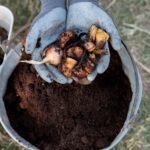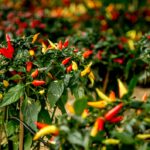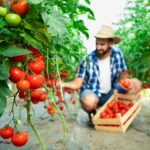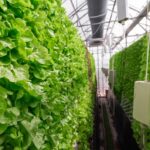As temperatures rise during the summer months, livestock animals are particularly vulnerable to heat stress, which can have detrimental effects on their health, welfare, and productivity. Preventing heat stress in livestock requires proactive management strategies and careful attention to their environmental needs. In this article, we’ll explore essential summer care tips to help farmers safeguard their livestock from the adverse effects of heat stress and ensure their well-being.
Understanding Heat Stress in Livestock:
Heat stress occurs when animals are unable to dissipate excess body heat effectively, leading to elevated body temperatures and physiological strain. Livestock species such as cattle, sheep, goats, pigs, and poultry are susceptible to heat stress, especially in regions with hot and humid climates.
Provide Adequate Shade and Shelter:
One of the most effective ways to prevent heat stress in livestock is to provide ample shade and shelter from the sun’s intense rays. Ensure that animals have access to shaded areas, such as trees, barns, or shade structures, during the hottest parts of the day. Designate multiple shaded areas within paddocks or pastures to accommodate the entire herd or flock.
Ensure Adequate Ventilation:
Proper ventilation is essential for maintaining air quality and reducing heat buildup in livestock housing facilities, such as barns, stables, and poultry houses. Install fans, vents, and misting systems to promote air circulation and cooling airflow. Consider the orientation and design of buildings to maximize natural ventilation and airflow.
Provide Cool, Fresh Water:
Access to clean, cool water is crucial for preventing dehydration and maintaining hydration levels in livestock during hot weather. Ensure that water sources are clean, free from algae or contaminants, and readily available to animals at all times. Install multiple water troughs or automatic waterers in different locations to encourage water intake.
Adjust Feeding Practices:
Modify feeding practices during hot weather to reduce metabolic heat production and digestive strain on livestock. Offer smaller, more frequent meals to prevent overeating and minimize heat generated during digestion. Consider feeding animals during the cooler parts of the day, such as early morning or late evening, to reduce heat stress.
Implement Cooling Measures:
Implement additional cooling measures to help livestock animals cope with heat stress. Use sprinkler systems or misters to wet the ground or provide a fine mist for animals to walk through, helping to lower body temperatures through evaporative cooling. Install shallow water troughs or mud wallows for pigs and other species to wallow in and cool off.
Monitor Animal Behavior and Health:
Regularly monitor livestock behavior and health indicators for signs of heat stress, such as excessive panting, drooling, lethargy, loss of appetite, or increased water consumption. Take immediate action if any signs of distress are observed, such as relocating animals to shaded areas, providing additional ventilation, or administering veterinary care as needed.
Preventing heat stress in livestock requires proactive management practices and a commitment to ensuring their welfare and well-being during hot summer months. By providing adequate shade, shelter, ventilation, water, and cooling measures, farmers can minimize the risk of heat-related health problems and optimize animal performance. Implementing these summer care tips helps to create a comfortable and safe environment for livestock, allowing them to thrive even in the heat of summer.
Join 'Farmers Mag' WhatsApp Channel
Get the latest Farming news and tips delivered straight to your WhatsApp
CLICK HERE TO JOIN






